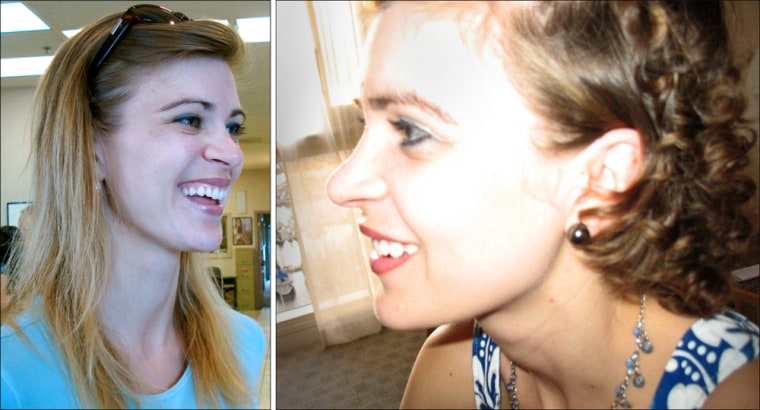After eight rounds of chemotherapy for her stage 1 breast cancer, Sarah Thebarge didn’t have a hair on her head. And what did eventually emerge from her scalp looked nothing like the blonde, thin hair she’d had all her life.
“It was thick, and it was curly, and it was dark,” recalls Thebarge, who wrote about her experiences on her personal blog, Tropic of Cancer. “At first, it looked like I had gotten a really horrible perm. It was that curly.” And it was, to someone who’d had pin-straight hair all her life, “completely unmanageable.”
This texture change – called “chemo curls” -- is pretty universal among cancer patients who've undergone chemotherapy, explains Dr. Jyoti Patel, an associate professor of hematology and oncology at Northwestern University.“All my patients say they got the permanent they never wanted,” she said. “The texture is often difficult to manage, and tends to be really wiry and difficult to style.”
Chemotherapy is very effective at killing rapidly dividing cells -- but it can’t tell the difference between cancer cells and normal cells, such as hair follicles. That’s why so many cancer patients lose their hair during chemotherapy, among other side effects.
Chemo also causes hair to grow more slowly after treatment is finished, and patients can pick up extra pigment when that happens, Patel said. But doctors aren’t totally sure what causes the change in hair texture post-chemo. “We think that it has to do with chemotherapy effects getting out of the system,” Patel wrote in an e-mail. Hair that was deep in the follicle takes a while to grow out, so that initial growth post-treatment will look pretty wacky for most people.
Patel tells her patients that their initial hair growth after chemotherapy is unlikely to feel like their own, and that “to populate your head and get your own hair back is usually a six to nine month process.”
For Thebarge, now 32 and working as a physician’s assistant in Portland, Ore., the process took more like 18 months. “(My hair) went from bedsprings to ringlets and then finally got to point where I could make it go straight,” she said.
Chemo curls affect both men and women, but since men usually wear their hair shorter than women, they often cut off the initial growth before it becomes a styling nightmare. Patel said that older patients tend to be less bothered by hair that’s curly or a different hue than before, since theirs might have been going gray or thinning prior to chemo.
But for younger patients like Thebarge, who was just 28 when she started treatment, the changes can be more jarring. Her post-chemo hair, she recalled, was a constant reminder that life was different. “Having those physical cues to remind you helps you make the transition. You can point them out to people and say ‘I’m different. I’ll never be the same.’”
Today, four years after she started chemotherapy, Thebarge is cancer-free, and on maintenance medication to prevent a recurrence. Her hair is super-straight again, but still dark, and about the same length as it was before starting treatment.
Hair, said Thebarge, becomes a symbol for how much cancer changes your life, and how much you’ve lost to it. But her locks became “not a symbol of loss, but a symbol of hope.”
“I can point to my hair and say, ‘I had cancer this long ago,’” she said.
Want more weird health news? "Like" The Body Odd on Facebook.
